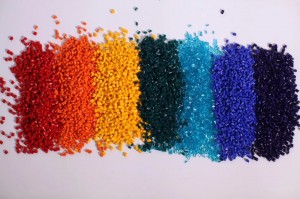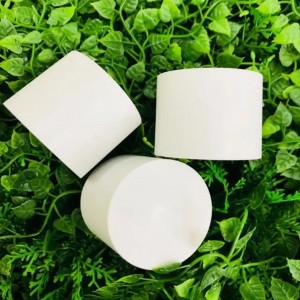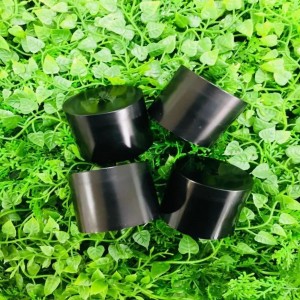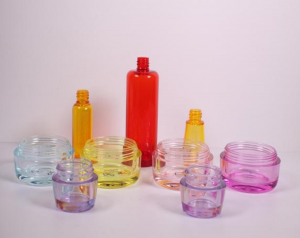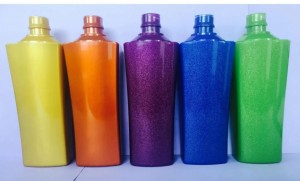Introduction to the no-spray process
Spray-free plastic is a new type of environmentally friendly aesthetic plastic, which is characterized by the fact that it can be directly injection molded without further spraying to achieve a gorgeous and beautiful appearance.
No-painting materials have been widely used and promoted in developed countries as early as its green and low VOC emission characteristics and are also liked by foreign consumers. Since the concept of spray-free began to be put forward in China, the development so far in the past few years, spray-free has been popular and respected by many industries, and there are more and more products applied to the spray-free materials. With the progress and development of the society, the application of no-spraying has gradually become an inseparable part of our daily life. No-painting has changed the traditional way to achieve visual and hand feeling by spraying and solved the problem of pollution to the atmosphere and water in the process of spraying by forming in one go.
Secondly, after spraying, the surface is easy to lose paint and skin after use, and the wear-resisting effect is poor, and it is easy to scratch after use, and the recycling range is small. In contrast, the spraying-free process solves the problem of fading and peeling of the spraying process and greatly increases the wear resistance.
Product advantages
- strong matte effect, beautiful color, high-end atmosphere of matte texture can significantly enhance the grade of plastic products.
- green and environmental protection, instead of spraying process, reduce solvent emissions, no fading, no shedding, good abrasion resistance.
- Visual and hand feeling close to spraying.
Application areas
Cosmetic products
Imitation marble pattern
Electronic products
Daily necessities
Household appliances
Difficulties of spray-free technology
In recent years, the trend of no-spray materials applied on home appliances is surging, and all manufacturers hope that no-spray materials can be applied on their products, however, due to the technical bottleneck of no-spray materials at this stage, not all product structures are suitable for using no-spray materials (some products will have flow marks and fusion line problems on the surface of the parts when using no-spray materials).
In fact, no-paint technology is not currently used on a large scale because there are still two major problems that are difficult to solve: flow marks and fusion lines, which seriously affect the overall aesthetics of the product.
Fuse Lines & Streaks:
Causes
Flow marks and fusion lines are caused by the following factors.
As mica, metal particles are easily oriented during the injection process, they tend to curl and flip when flowing with the plastic melt or at the intersection of two melt strands, and the sparse mica and metal particles at the fusion junction lead to the decrease of local reflection ability on the surface of the parts.
Mica, metal particles are fragile, easy to break and lose luster.
In addition, the dispersion of mica and metal particles is not good, and it is easy to agglomerate and cause poor appearance.
Solution
1、Choice of color
Appropriate choice of materials with natural texture, pearlescent shimmer, or dark colors can reduce or avoid the generation of flow marks, fusion lines.
2、Molding process
- High gloss, high brightness, the use of high, injection molding parameters pick mold temperature with high temperature and high pressure state.
- High mica/metal powder addition, CAA material adopts wear-resistant material.
- Single gate molds, need to choose the right location of glue feeding and gate shape etc. according to the size of the product.
- For multi-gate injection molding products, the glue feeding method needs to adopt sequential glue feeding.
- Choose a low to medium injection flow rate.
3、Model design modification
- Through the improvement of mold design, change the glue inlet, reduce the cavity and plate rib, etc., adjust the flow marks to the back of the product or inconspicuous places. Minimize or weaken the flow marks and fusion lines.
- Make the size of the glue inlet as large as possible.
- Choose a suitable location for the glue inlet so that the bond line is as far inside the product as possible, or the bond line can be cut off.
- Use steam mold or hot runner mold, the exhaust of the mold must be very good.
4、Processing process
Drying control – water content below 5%: No-paint materials, like most materials, will absorb water vapor from the air. It must be dried before the molding process, otherwise it may lead to silver and water splashes on the surface of the product and affect the surface gloss of the product. It is usually required that the moisture content of spray-free materials be kept below 0.05 after drying.
For example, the drying temperature is usually 70℃-85℃ and 3-4 hours for ABS base material. Too high a temperature is likely to cause material performance degradation; too low a temperature, not enough drying time, resin moisture content is too high, the surface of the product is easy to produce gas traces.
Injection molding temperature-medium and low temperature injection molding: Since the metal pigment is added to the spray-free resin, it is easy to cause the discoloration of the metal pigment under the high shear effect of the screw. Therefore, the principle of spray-free material molding problem setting is to ensure that the material is fully plasticized under the premise of trying to use low and medium temperature injection molding to prevent material degradation.
For example, the processing temperature of ABS-based spray-free materials is 210 ℃ – 230 ℃. If the temperature is too high, the material will be degraded and gas marks will be produced on the surface of the product.
Injection speed – medium speed phased ladder control: When using spray-free materials for injection molding, choose the injection speed as long as you consider the appearance of the product, the exhaust of the mold and the resistance to resin flow in the cavity of the injection molding machine.
Faster injection speed will generally make the dissolution process longer, suitable for filling thin-walled products and forming a better surface finish and surface effect. However, too fast injection speed tends to make the sol suffer from strong shear, resulting in the destruction of the shape and particle size of the pearlescent color powder and reducing the special color effect of the products. In addition, the problems such as spray marks and bad exhaust are easy to appear near the gate.
Therefore, under the premise of ensuring the surface effect and quality of the products, it is recommended to use the medium speed of phased ladder speed control to ensure the smooth filling and the appearance of the products.
Injection pressure – lower pressure: Injection pressure is to overcome the resistance of the melt in the flow process, to give the melt a certain filling speed and to compact and shrink the melt, in order to ensure the filling process goes smoothly.
The actual injection pressure is related to many variables, such as: melt temperature, mold temperature, part geometry, wall thickness, flow length, and other mold and equipment conditions. In general, it is best to choose a lower pressure that meets performance, appearance and injection cycle requirements.
It is also important to pay attention to the difference between the actual peak injection pressure and the set value. In general, the appropriate holding pressure is 60-80% of the injection pressure.
Mold temperature – higher mold temperature: Mold temperature directly affects the surface brightness of the final product, the fusion line and its strength, etc. Using high mold temperature can increase the material flow, obtain higher bond line strength, and can reduce the internal stress of the molded products, make them better heat and chemical resistance, as well as improve the replication of the melt to the mold surface, improve the gloss and special color effect of the products. In order to achieve the ideal surface quality effect, a higher mold temperature should be used as much as possible when using no-spray materials. For ABS as the base material, the mold temperature is usually 70-90℃.
In short, only reasonable mold design, proper drying temperature, injection temperature, injection speed, and reasonable mold temperature are the essential conditions for spray-free materials to make beautiful-looking products.
5、Comprehensive: choose the design can reflect the advantages of spray-free materials
- Reduce or avoid flow marks, fusion lines and other problems of product appearance and parts.
- High gloss, curvature, strong color effect and simple structure.
Case show (multiple applications)
1、Automotive
Silver PP car guards, silver PP car bumper lower guards
2、Electrical appliances
Vacuum cleaner shell, rice cooker decoration piece
3、Packaging & Daily necessities
Luggage, shampoo bottles, cosmetic outer packaging
Although there are still various problems in the application of spray-free plastic, we should be optimistic that such an environmentally friendly and innovative material will eventually be recognized and welcomed by people.
Post time: Nov-18-2022
